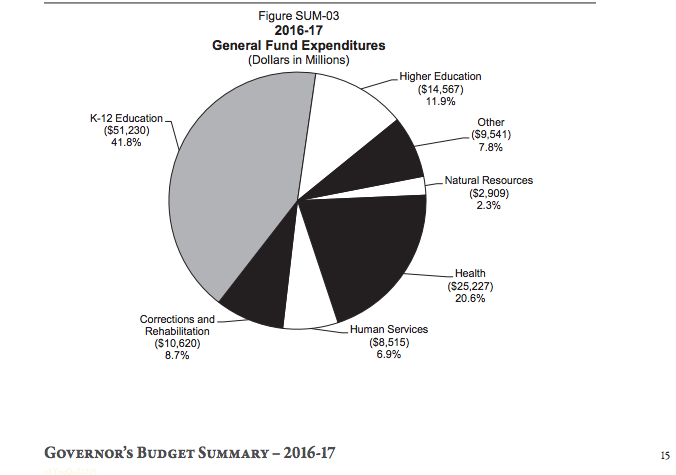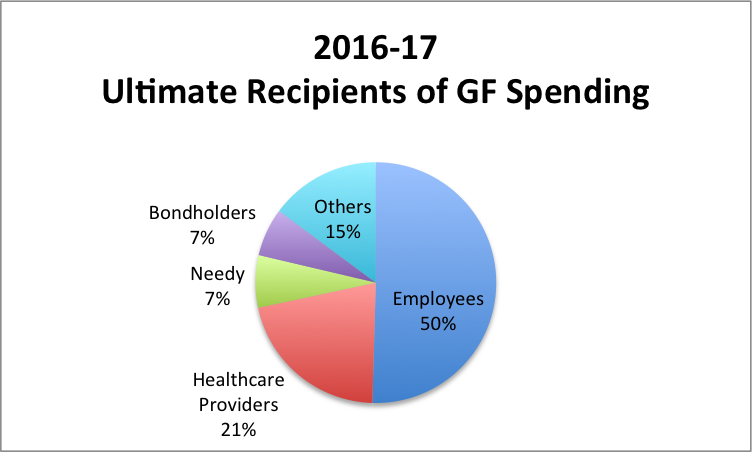California’s General Fund will spend $122 billion this fiscal year. The state budget illustrates that spending in the following manner:

But that chart doesn’t show WHO pockets that money. Looked at that way:

As an example, one must look to Schedule 4 of the Governor’s Budget to see that nearly half of Corrections spending goes in salary to 55,000 department employees. Likewise, most state spending on Medi-Cal (California’s Medicaid program) is pocketed by pharmaceutical companies, doctors, nurses and hospitals and 81% of school district spending, 61% of which is provided by the state, goes to or for the benefit of employees.
The fact that government employees* and healthcare providers will pocket 71%, or $85 billion, of General Fund spending this year helps explain why they are the state’s most aggressive political actors. With so much money on the line, they have a lot to lose and to gain from state propositions and who sits in the state legislature and governor’s office.
Of course, government employees and healthcare providers must be paid for the services they provide, just as Apple’s and Google’s employees and shareholders must be compensated for the products and services allowing me to research, write and publish this essay. But whereas I know Apple and Google benefit from my spending and I can evaluate the performance of their products and services, CA’s budgets obscure who pockets state spending and how they perform. Just as important, if Apple and Google perform poorly I can move to other suppliers whereas Californians dependent on public schools and Medi-Cal have no alternatives.
Elected officials, journalists, citizens and political philanthropists must help ensure state spending improves citizen fortunes and not just lines the pockets of a few special interests.
*Note that government employees also pocket the lion’s share of Special Fund revenues that this fiscal year will total $49 billion. Also, note that an increasing share of state (and local and school district) spending on government employees is going to cover increasing spending on the costs associated with retired employees, leaving less for active employees.

